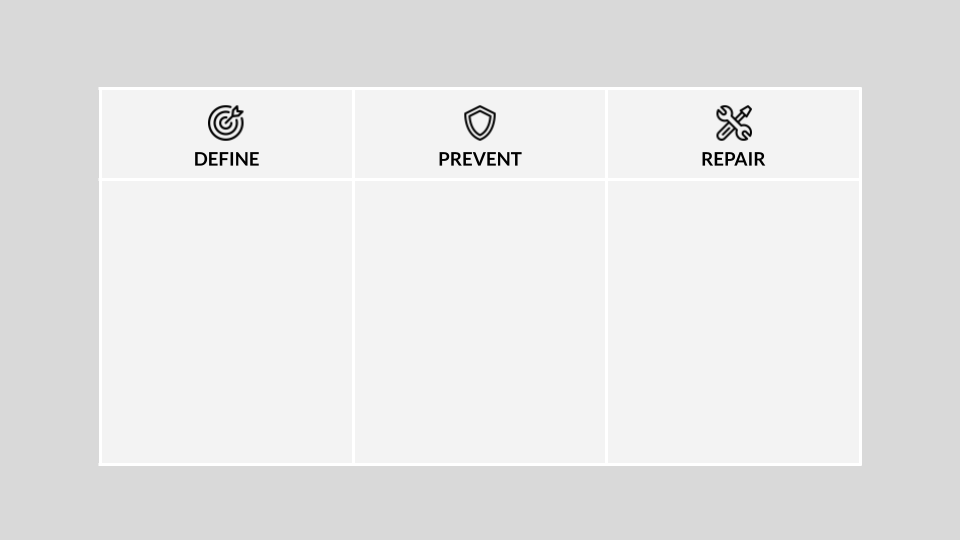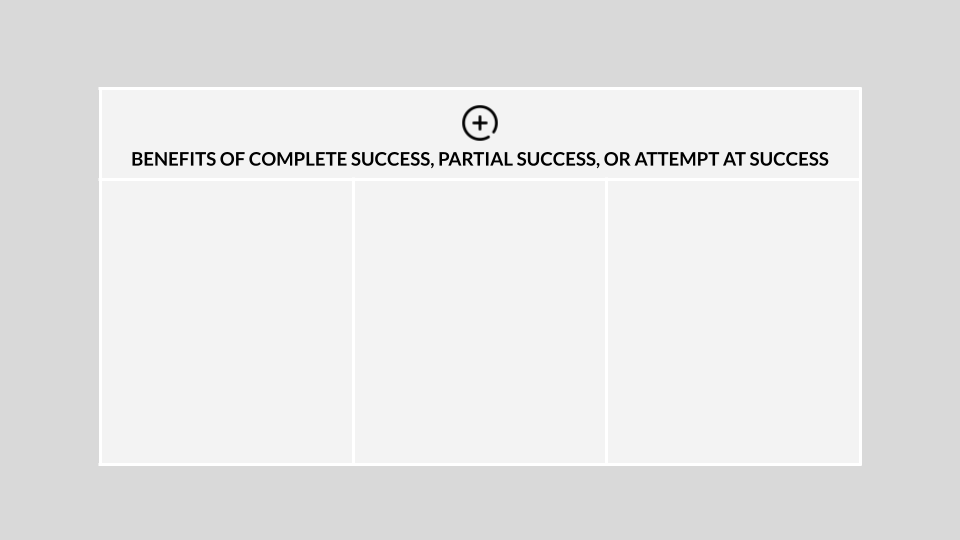Fear is unavoidable, especially when attempting to accomplish an important goal or embarking on a new project that requires you to take risks. However, fear doesn’t need to become a source of unmanageable stress and anxiety. A simple method called “fear setting” will help you to define your fears so that you can embrace them and achieve your goals.
The science of fear
In biological terms, fear is induced when there is a threat to our wellbeing or survival. Neuroendocrine messengers are activated, causing physiological changes including increased heart rate and blood pressure, so that we are ready to handle the perceived risk.
This evolutionary fight-or-flight response ensures we are more alert to danger, thus offering us a form of protection. In addition to fight-or-flight, the “freeze” coping strategy of immobilisation may occur if we feel like we cannot escape the threat. This biological response to fear can lead to paralysis, preventing us from taking action.
There are several common triggers for fear. For example, natural conditioning can lead to a fear of snakes or spiders. Social fears are also fairly common, and can be triggered by formal situations, public speaking, or the thought of being rejected. Regardless of what triggers them, all these fears may significantly impact your confidence in life and in the workplace.
Research suggests that the most fundamental trigger for fear is uncertainty. The good news is that if you can identify which fears are rational, and which are irrational, you can exert some level of control over them. This may prevent fear from delaying your progress towards a goal or paralysing you into inaction.
What is fear setting?
In humans, fear is modulated through the process of cognition and learning. The fear setting method was created by famous entrepreneur and author Tim Ferriss. The catalyst for exploring fear setting came when Ferriss found that despite the success of his business, he felt completely drained by its demands on his time and energy.
Fear setting was born as a process of reflection that allowed him to step away from the everyday grind to gain perspective, and therefore face his fears. It involves identifying and defining your fears so that you can overcome them.
The unpleasant feelings that come with fear are caused by the neuroendocrine response. Your discomfort might be so strong that it prevents you from taking action, despite wanting to. Rather than face your fear, you turn away from it.
For example, you may see your dream job advertised, or have the opportunity to get a new business off the ground. But fear of being rejected, falling behind, or not being good enough may mean that you choose not to act. Instead, you decide to stay in the same role you have been in for a decade. Unfortunately, a year down the line, you may regret not acting when you had the chance.
Our thought patterns are altered by fear, which makes it harder to make a rational decision in uncertain situations. Our cognitive biases mean we might emphasise the potential negative consequences of taking action, yet downplay any prospective positives. It’s also likely that the costs of inaction will be ignored, so that future missed opportunities associated with inertia are overlooked. In short, we’re more likely to imagine the worst-case scenario, while disregarding the potential for positive outcomes.
Rather than blindly following your fears, the fear setting method encourages you to define your fears through close examination, so that they can be managed. Those who practice fear setting learn to build an operating system that promotes awareness of their fears, so that they can act with intention and thrive in high stress environments.
How to practice fear setting
There are three steps involved in defining your fears so you can make informed decisions. Use one sheet of paper for each step to keep your thoughts clear, and make sure to block at least one hour in your calendar so you have time to fully explore the ramifications of your thoughts, emotions, and decisions.
1. Put your fears under a microscope
Although our natural urge is to turn away from the discomfort of fear, the first step involves facing your fear head on. Mark three columns on your first sheet of paper, and label them define, prevent, and repair.
Under define, write down your doubts, worst-case scenarios, and problems that might arise. For example, if you’re worried about going freelance, this list should define everything that you fear about taking action, such as not earning enough money or not being successful.
The prevent column is where you should explore how you can prevent those worst-case scenarios from occurring. This might include only freelancing on the side at first, reducing your living costs, taking relevant professional courses, or working with a coach.
In the third column, repair, you will list how you could repair the damage and get back on track if your fear were to come true. For example, if you have remained in employment, you will have your day job to fall back on. You may also have contacts you can reach out to, and new roles you can apply for with the experience you have gained.
Once you have completed the three columns, give each of your worst-case scenarios in the define column an impact score out of 10, where 1 is minimal impact and 10 is significantly life-altering. If you have savings and will be able to continue earning money while setting up a business, you might be surprised to find that running out of money might only score 3 out of 10. The simple act of exploring your fears can reduce their impact.
2. Consider the benefits of taking action
On your second sheet of paper, consider what might go well. Make a list of the potential benefits of complete success, partial success, or even just attempting to take action.
Even if your business idea is ultimately not successful, taking steps to becoming an entrepreneur might lead to development of new skills, improved networking, realisation of your own potential or improved flexibility.
Rate each benefit out of 10, with 1 indicating minimal impact and 10 being very significant. For instance, you may find that learning how to structure a company scores 10, and this small win could prove incredibly important to you in the future, when you try building another company. This exercise will make you realise that whatever the outcome, you will learn something new and grow in the process.
3. List the consequences of inaction
On the third sheet of paper, draw three columns labelled six months, one year and three years. In each column, document the potential emotional, financial, and physical costs of not taking action.
Let’s say that you decide to keep on focusing on your day job instead of launching a side project that could become an independent business in the future. At six months, the consequences of inaction may include feeling stuck in a role where you’re not growing anymore. At three years, you could be stuck on the same salary rather than deciding your own pay as an entrepreneur.
Once you have completed the three steps, your fears should be clearer, the benefits may appear greater, and you will feel better prepared to conquer your fears.
Fear setting provides clarity so that you can conquer your fears and take action. The worst-case scenario may not be as bad as you might assume, while not taking any risk could mean you fail to fulfil your potential. Attempting something new might trigger your fears, but even if you’re only partially successful in your endeavours, you may still reap significant benefits in the future.



